“‘My daughter just screamed, ‘Look at her arm!’ the message began, and for the first time in my life, those words made me smile. I could just imagine the girl on the other side of the screen, bouncing in excitement to see the image of a princess who looked exactly like she did.
Her mother had shown her a picture of me dressed as Snow White, featured recently by Comic-Con International as the Judge’s Choice winner in their prestigious Masquerade contest. Although I tried to emulate the typical princess pose, I was far from the traditional perfect princess. My limb difference was on full display, my honest smile the culmination of finally feeling confident in my own skin.
‘I’m sure your daughter will make the most perfect princess this Halloween too!’ I finished responding to the mother. And I meant it. I hoped more than anything that she was able to glow a little brighter today, feeling like truly anything might be possible.
A limb-different princess was a hard thing to imagine once, growing up in small towns long before the age of the Internet. Despite moving from town to town with my father, a pastor by trade, I never met another soul who looked like me. It was easy to imagine I was the only person on the planet born with this particular affliction. And for all practical purposes, in my tiny world, I was.
Growing up is hard enough, but it’s even tougher when there is no guidebook. No one knew quite how to teach me to tie my shoes, or button my shirt, or play jump rope on the playground. There was only me, the stubbornly resilient 5 year old, huffing in frustration until I figured out how to do what I wanted.
I remember the special education teacher pulling me aside in first grade, eager to show me a convoluted series of turns and tucks she had created to keep my shoelaces secure without actually tying them. I think I tried her way twice before deciding it would be far less trouble to just figure out how to tie a bow myself.
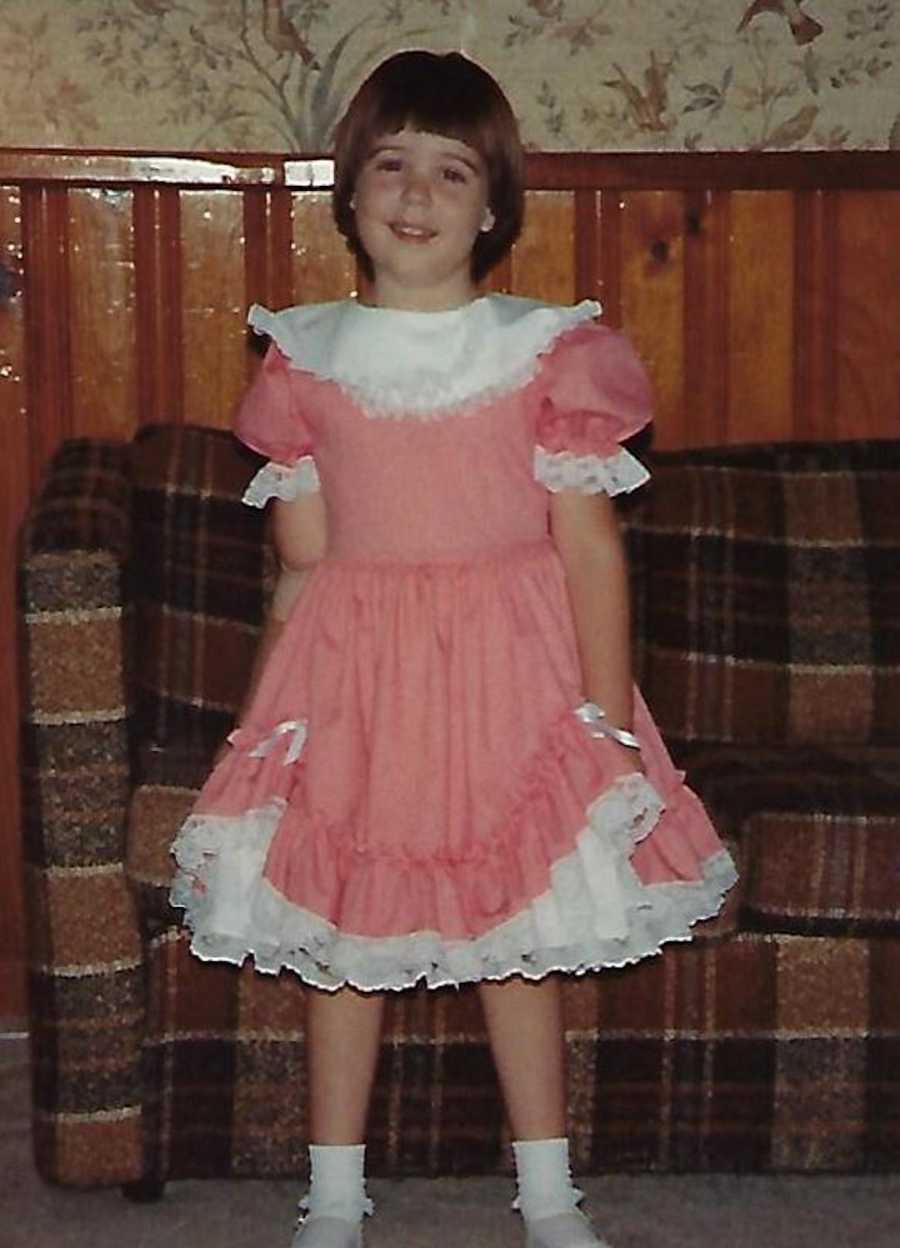
Learning to do things by sheer determination became one of the defining hallmarks in my life. Even though I’ve always had supportive people in my life, I think I also felt like I had something to prove – both to the kids who visibly fought to not stand by me when a game required holding hands on the playground, and to the adults who seemed amazed when I could do normal things, as if they had expected so little from me in the first place.
There was no woman on television or in the news that might show either them or I what things I might be capable of accomplishing one day. There was only me, trying desperately to create possibilities out of thin air.
Although my childhood fostered in me a sense of fierce determination, it also created a deep fear of being seen. I tried to hide my limb difference with prosthetics and clever positioning, afraid that people would think less of me if they knew I was physically lacking.
I thought if I could first win them over with my brains or charm, they might offer up less pity when they finally learned of my condition. I had always assumed that the best way to get a fair shake in life was to carefully create the illusion of normalcy.
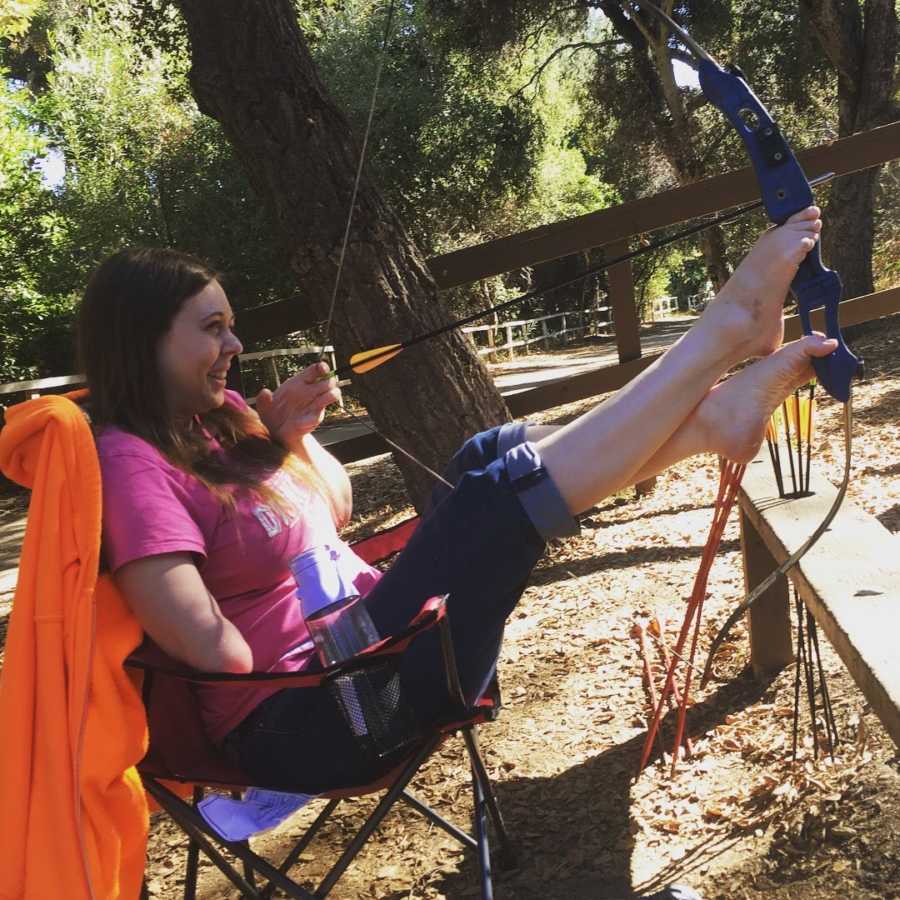
I carried many of those feelings into adulthood, even as I found new happiness and began to explore creative outlets. My husband was actually the one who turned me into a seamstress, surprising me with a sewing machine one Valentine’s Day. Immediately, I decided my first project would be a corset vest for the Renaissance Faire, which was a particularly terrible idea, as I muddled through difficult pattern instructions and mismatched pieces.
Once again, I had to entirely figure out my own techniques, elbows holding down fabric and toes clamping hems. But, possibly just by the sheer force of will to rip out the seams 20 times until it finally looked right, I managed a passable outfit and a love for costuming was born.
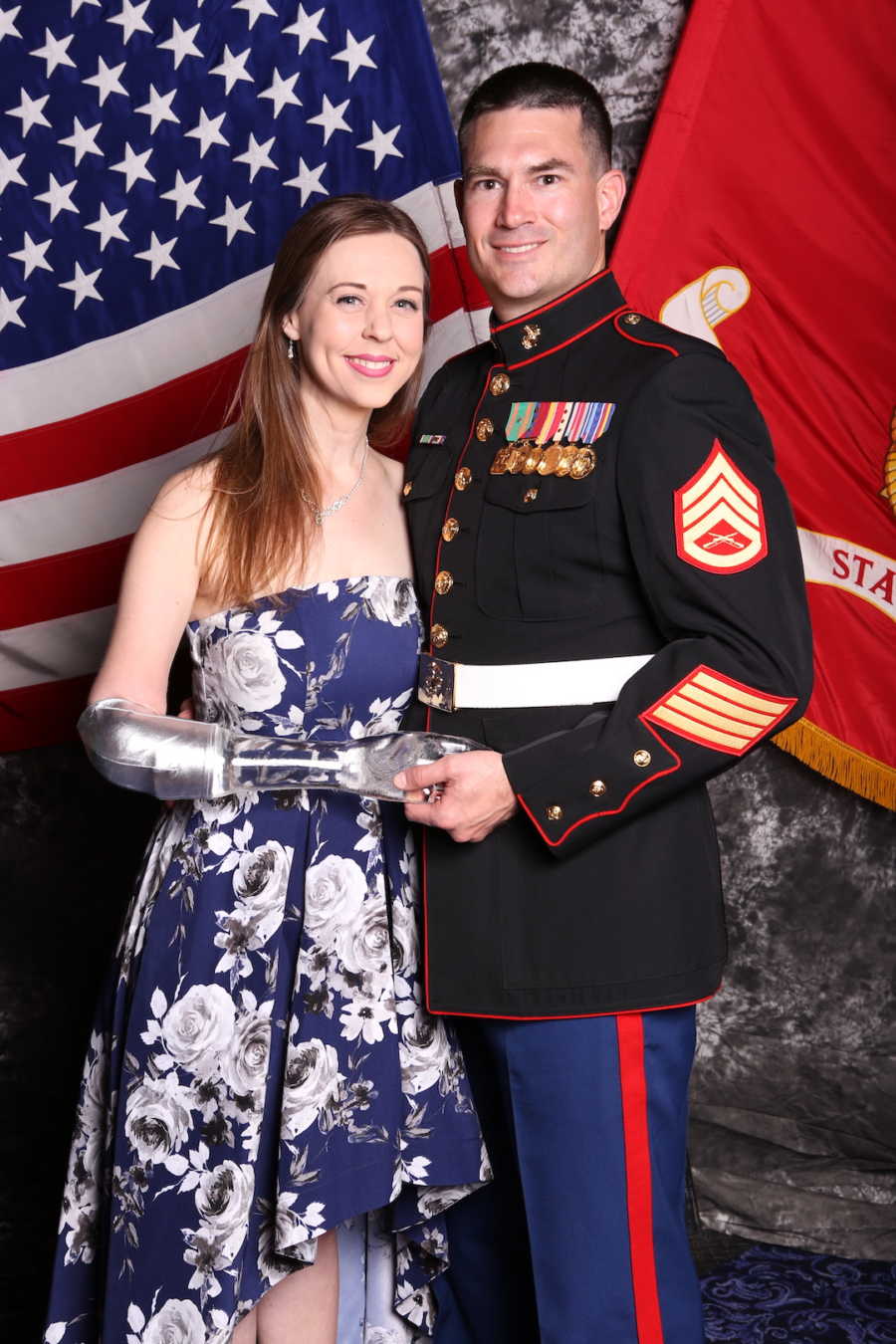
Renaissance Faires naturally led to comics conventions, where I was thrilled to hear that there would be thousands of grown adults geeky enough to dress up as their favorite characters for a day. These were truly my kind of people. I remember the first convention where I wore a princess costume in particular, where a little girl literally screamed ‘ELSA!!!’ from across the street and could barely be restrained by her parents from running into traffic.
The kids seemed simply thrilled to meet one of their favorite screen characters, chatting about the last time they had ‘seen me,’ and sharing movie moments they had memorized by heart. There was a magic in their interactions that made me feel more accepted than I had ever felt. They didn’t even seem to notice I was wearing a prosthetic arm.

Still, I felt like a bit of a fraud. At times, I worried that it would somehow spoil the magic if the kids reached out and discovered my gloved hand was merely a prop. And at other moments I grew frustrated that I had to hide anything at all. Where were the characters that I could play authentically? Other than Furiosa and Tenel Ka, an obscure Star Wars character, my options seemed practically non-existent.
A pivotal moment in my life came a few years later, as my daughter studied Cinderella stories at school. She was assigned a number of beautiful picture books, adapting the familiar fairy tale to every time and culture. Yet even with all that diversity, I wondered why there were still no princesses who looked like I did.
That was the princess I had so desperately longed to see when I was a child. I wondered how differently my life might have turned out if I could have seen disabled women pictured as beautiful, or clever or strong…perhaps I would have more easily been able to apply those labels to myself.

As I began to wonder what that sort of princess might even look like, I had a spark of divine inspiration, imagining Cinderella trading out her glass slippers for a glass arm. What a sight she would have been at the ball, turning something that others saw as a negative feature into a beautiful work of art.
What better stroke of confidence to attract the attention of a prince? With my own particular brand of humor, I could even imagine him standing dumbfounded at the stroke of midnight, a glass arm left behind in his hand. ‘Do…Do you need this?’ he would undoubtedly call after her, determined to find the only woman in the kingdom unique enough to stand out from the crowd.
With that image in mind, I felt almost duty-bound to my childhood self to bring this princess to life. I set to work making a dress that had to be special enough to be fit for a fairy tale, and I completed the look with the help of my own magical godfather, Gilbert Lozano, who crafted the beautiful glass arm. I finally felt like a princess with nothing to hide. Although I had no concept of how far this idea would reach, for the first time in my life, I wanted nothing more than to be seen.
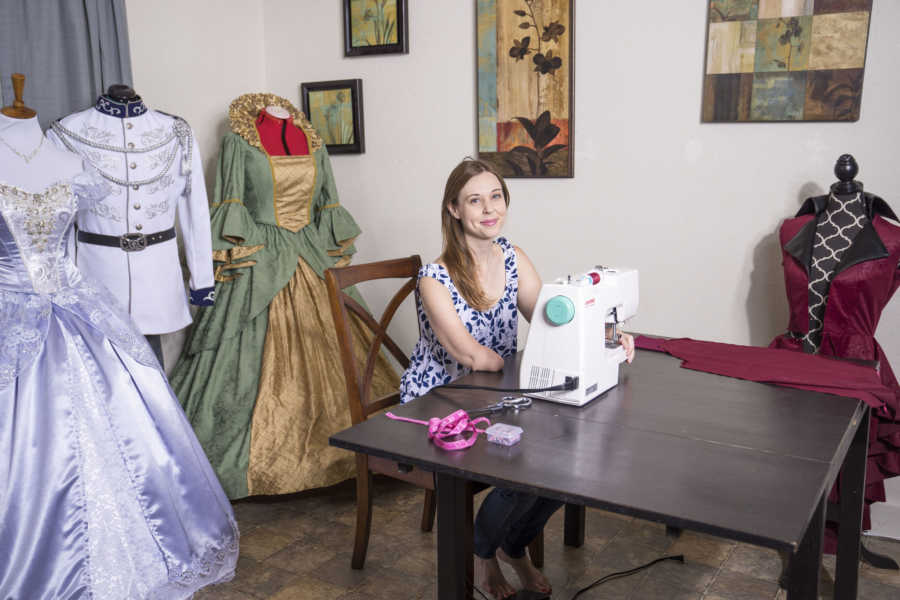
When I posted the pictures of Cinderella and Prince Charming (my own dashing husband), I never expected them to reach much further than my own circle of friends. I shared in a few groups for people with disabilities, hoping a few other limb-different kids might see them and feel a sense of representation missing from my own childhood.
I never imagined that people all around the world would respond to those photos. As the pictures began to go viral and word spread about this one-armed princess, it was equal parts exhilarating and terrifying. I was moved to tears more than once by the kind comments of strangers. And I found my identity suddenly fully wrapped up in the disability I had once tried to hide.
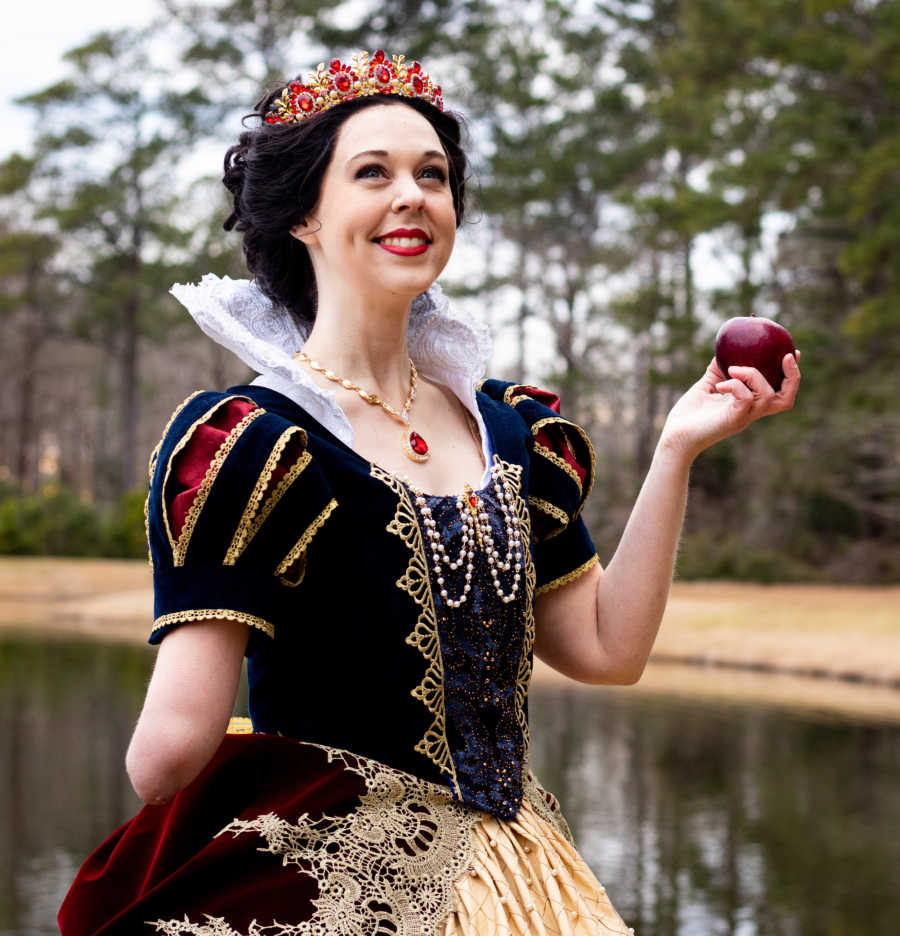
When I was younger, I often questioned why God would choose me for this particular challenge in life. Now, I realize that the why is less important than how you let it affect your story. In the end, facing my fears is what finally set me free. Cosplay gave me a way to step into another character’s shoes and, in a way, write my own fairy tale. Instead of endlessly wishing for characters I could identify with, I discovered empowerment in creating them.
I recently made a costume of Snow White, known of course for her beauty, and this time I chose to portray her with no prosthetic at all. Though I had confidence in my sewing ability, it was still intimidating to step into those shoes! Even as I meticulously hand-stitched nearly 2,000 beads, I still wondered if I could pull it off. I looked in the mirror and scrunched my nose at the smile lines scattered around my eyes as a woman inching closer to 40.
The extra skin that never quite goes away after having a baby. And, more than anything, my limb difference, no longer hidden from sight. Could I still be a princess when all the gimmicks went away? Would people believe this character was beautiful when it was just…me?
When I put on that dress for the first time, the fears began to melt away. I was more than a princess now; I felt like a queen, finally discovering the power she held within herself the whole time. My smile was full of genuine joy, knowing that if nothing else, this version of Snow White had created a world in which beauty was more than physical perfection. This was more than the retelling of a story, it was the creation of a possibility.
My 8-year-old self would have never believed that she could become a princess, or even a costume designer. But I cosplay in the hope that one simple picture might make a child somewhere dream a little bigger, for they are also beautiful and clever and strong indeed—exactly as they already are.”

This story was submitted to Love What Matters by Mandy Pursley, of Be the Spark Cosplay from North Carolina. You can follow her journey on Instagram and Facebook. Submit your own story here.
Read more stories about limb difference advocacy:
SHARE this story on Facebook to help celebrate unique and beautiful differences!



